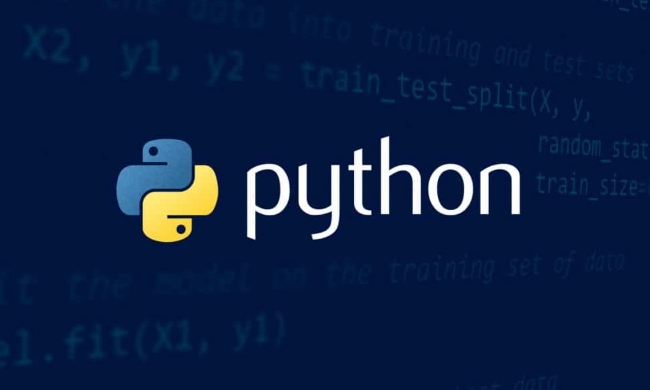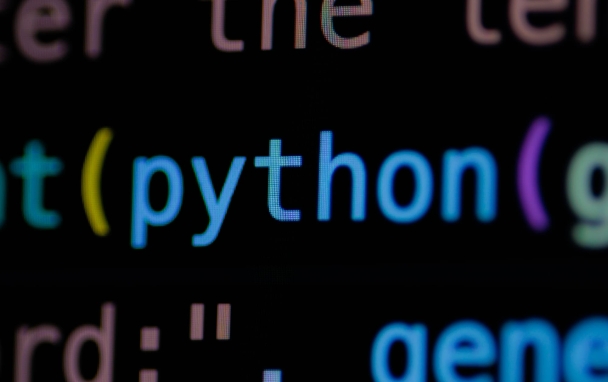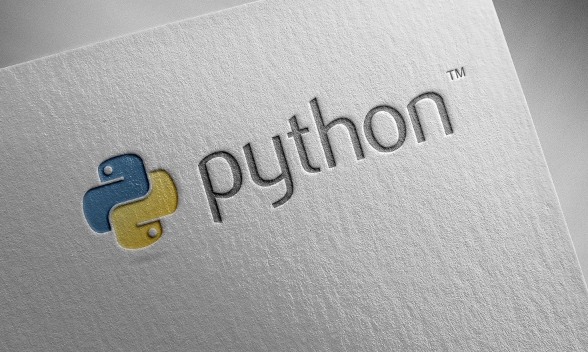A virtual environment can isolate dependencies from different projects. Created using Python's own venv module, with the command python -m venv env; activation method: Windows uses env\Scripts\activate, macOS/Linux uses source env/bin/activate; installation package uses pip install, use pip freeze > requirements.txt to generate requirements files, and use pip install -r requirements.txt to restore the environment; precautions include not submitting to Git, reactivate each time the new terminal is opened, and automatic identification and switching can be used by the IDE.

When using Python for development, you often encounter situations where different projects rely on different version libraries. At this time, it is the turn of Virtual Environment to play. It allows you to create an independent environment for each project without interfering with each other.

What is a virtual environment?
Simply put, the virtual environment is an isolated "small space" with its own set of Python interpreters and installation packages. Global packages in the main system will not affect these environments. This way you can run multiple projects on the same machine, each using its own dependency version, without worrying about conflicts.

For example: Project A requires Django 3.x, while Project B must use Django 4.x. If there is no virtual environment, you can only install one version globally, which may be a waste of time. With a virtual environment, the two projects can be developed in parallel without affecting each other.
How to create a virtual environment?
Python comes with a module called venv , which is used to create a virtual environment without additional installation.

The basic steps are as follows:
- Open the terminal in the project directory
- Enter the command:
python -m venv env
This will create a new folder calledenvin the current directory, which is your virtual environment. - Once the creation is complete, the next step is to activate it
Activation methods vary slightly depending on the operating system:
- Windows:
env\Scripts\activate - macOS/Linux:
source env/bin/activate
Once activated successfully, the terminal prompt will usually start with (env) , indicating that you are now in this environment.
Install and manage dependencies
After the environment is activated, the packages installed using pip install will only appear in the current virtual environment. For example, if you want to install requests:
pip install requests
You can view installed packages in the current environment through pip list .
If you need to migrate or backup dependencies, you can use the following command to generate the requirements file:
pip freeze > requirements.txt
After someone else gets this file, just execute:
pip install -r requirements.txt
You can restore the same environment.
Some precautions for virtual environments
Although the virtual environment is very convenient, there are several small points that are easy to ignore:
- Do not submit the virtual environment to the Git repository. Generally, add
/env/or the folder name you gave it.gitignore. - Every time a new terminal window is opened, the virtual environment must be reactivated.
- If you change your computer or reinstall the system, remember to use
requirements.txtto restore the dependencies. - Some IDEs (such as PyCharm, VS Code) can automatically identify and help you switch virtual environments, eliminating manual operations.
Basically that's it. Making good use of virtual environment can help you avoid many dependency conflicts and make the project structure clearer.
The above is the detailed content of Setting Up and Using Python Virtual Environments. For more information, please follow other related articles on the PHP Chinese website!

Hot AI Tools

Undress AI Tool
Undress images for free

Undresser.AI Undress
AI-powered app for creating realistic nude photos

AI Clothes Remover
Online AI tool for removing clothes from photos.

Clothoff.io
AI clothes remover

Video Face Swap
Swap faces in any video effortlessly with our completely free AI face swap tool!

Hot Article

Hot Tools

Notepad++7.3.1
Easy-to-use and free code editor

SublimeText3 Chinese version
Chinese version, very easy to use

Zend Studio 13.0.1
Powerful PHP integrated development environment

Dreamweaver CS6
Visual web development tools

SublimeText3 Mac version
God-level code editing software (SublimeText3)
 How to handle API authentication in Python
Jul 13, 2025 am 02:22 AM
How to handle API authentication in Python
Jul 13, 2025 am 02:22 AM
The key to dealing with API authentication is to understand and use the authentication method correctly. 1. APIKey is the simplest authentication method, usually placed in the request header or URL parameters; 2. BasicAuth uses username and password for Base64 encoding transmission, which is suitable for internal systems; 3. OAuth2 needs to obtain the token first through client_id and client_secret, and then bring the BearerToken in the request header; 4. In order to deal with the token expiration, the token management class can be encapsulated and automatically refreshed the token; in short, selecting the appropriate method according to the document and safely storing the key information is the key.
 Explain Python assertions.
Jul 07, 2025 am 12:14 AM
Explain Python assertions.
Jul 07, 2025 am 12:14 AM
Assert is an assertion tool used in Python for debugging, and throws an AssertionError when the condition is not met. Its syntax is assert condition plus optional error information, which is suitable for internal logic verification such as parameter checking, status confirmation, etc., but cannot be used for security or user input checking, and should be used in conjunction with clear prompt information. It is only available for auxiliary debugging in the development stage rather than substituting exception handling.
 What are python iterators?
Jul 08, 2025 am 02:56 AM
What are python iterators?
Jul 08, 2025 am 02:56 AM
InPython,iteratorsareobjectsthatallowloopingthroughcollectionsbyimplementing__iter__()and__next__().1)Iteratorsworkviatheiteratorprotocol,using__iter__()toreturntheiteratorand__next__()toretrievethenextitemuntilStopIterationisraised.2)Aniterable(like
 What are Python type hints?
Jul 07, 2025 am 02:55 AM
What are Python type hints?
Jul 07, 2025 am 02:55 AM
TypehintsinPythonsolvetheproblemofambiguityandpotentialbugsindynamicallytypedcodebyallowingdeveloperstospecifyexpectedtypes.Theyenhancereadability,enableearlybugdetection,andimprovetoolingsupport.Typehintsareaddedusingacolon(:)forvariablesandparamete
 How to iterate over two lists at once Python
Jul 09, 2025 am 01:13 AM
How to iterate over two lists at once Python
Jul 09, 2025 am 01:13 AM
A common method to traverse two lists simultaneously in Python is to use the zip() function, which will pair multiple lists in order and be the shortest; if the list length is inconsistent, you can use itertools.zip_longest() to be the longest and fill in the missing values; combined with enumerate(), you can get the index at the same time. 1.zip() is concise and practical, suitable for paired data iteration; 2.zip_longest() can fill in the default value when dealing with inconsistent lengths; 3.enumerate(zip()) can obtain indexes during traversal, meeting the needs of a variety of complex scenarios.
 Python FastAPI tutorial
Jul 12, 2025 am 02:42 AM
Python FastAPI tutorial
Jul 12, 2025 am 02:42 AM
To create modern and efficient APIs using Python, FastAPI is recommended; it is based on standard Python type prompts and can automatically generate documents, with excellent performance. After installing FastAPI and ASGI server uvicorn, you can write interface code. By defining routes, writing processing functions, and returning data, APIs can be quickly built. FastAPI supports a variety of HTTP methods and provides automatically generated SwaggerUI and ReDoc documentation systems. URL parameters can be captured through path definition, while query parameters can be implemented by setting default values ??for function parameters. The rational use of Pydantic models can help improve development efficiency and accuracy.
 How to test an API with Python
Jul 12, 2025 am 02:47 AM
How to test an API with Python
Jul 12, 2025 am 02:47 AM
To test the API, you need to use Python's Requests library. The steps are to install the library, send requests, verify responses, set timeouts and retry. First, install the library through pipinstallrequests; then use requests.get() or requests.post() and other methods to send GET or POST requests; then check response.status_code and response.json() to ensure that the return result is in compliance with expectations; finally, add timeout parameters to set the timeout time, and combine the retrying library to achieve automatic retry to enhance stability.
 Setting Up and Using Python Virtual Environments
Jul 06, 2025 am 02:56 AM
Setting Up and Using Python Virtual Environments
Jul 06, 2025 am 02:56 AM
A virtual environment can isolate the dependencies of different projects. Created using Python's own venv module, the command is python-mvenvenv; activation method: Windows uses env\Scripts\activate, macOS/Linux uses sourceenv/bin/activate; installation package uses pipinstall, use pipfreeze>requirements.txt to generate requirements files, and use pipinstall-rrequirements.txt to restore the environment; precautions include not submitting to Git, reactivate each time the new terminal is opened, and automatic identification and switching can be used by IDE.






